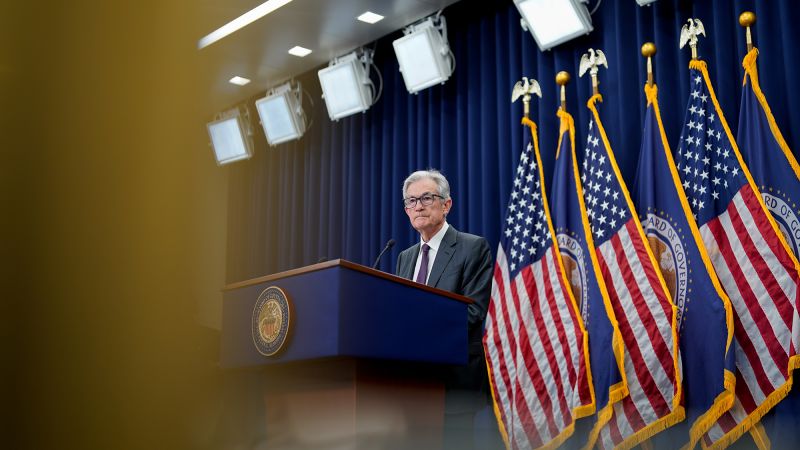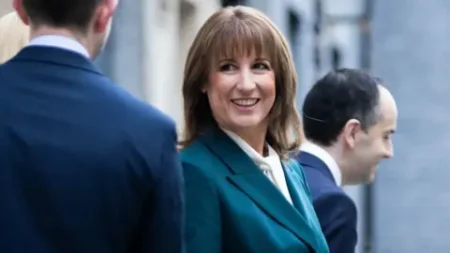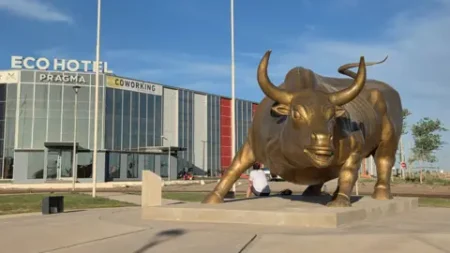In a recent statement, White House Press Secretary Karoline Leavitt disclosed that former President Donald Trump is contemplating taking legal action against the current Federal Reserve Chair Jerome Powell. This development emerged during a press briefing on Tuesday, coinciding with Trump’s own remarks on his social media platform earlier that day where he hinted at the potential of a “major lawsuit” targeting Powell. Trump’s motivation, as he articulated, stems from what he perceives as Powell’s “horrible” management and the “gross incompetence” displayed in overseeing the construction of Federal Reserve buildings.
Trump’s comments are significant as they reveal his ongoing frustration with Powell, particularly regarding the Federal Reserve’s interest rate policies. Trump has previously expressed his desire for the Fed to lower interest rates to stimulate economic growth, a request that has evidently not been met by Powell and the board of governors. The former president’s abrasive critique of Powell includes a rather pointed observation on the extensive costs associated with the renovations and constructions within the Fed—projects he suggests should have been managed with a far lesser budget of around $50 million, rather than the multibillion-dollar expenditures that appear to have taken place.
Moreover, Leavitt’s announcement about the possibility of a lawsuit indicates a potential escalation in the ongoing tensions between Trump’s administration and the Federal Reserve. This suggested legal battle also mirrors the concerns raised by Republican Representative Anna Paulina Luna, who has accused Powell of providing misleading testimony to Congress about renovation plans. Subsequent to this testimony, the Federal Reserve has made efforts to clarify Powell’s statements, underscoring the contentious nature of the issues involved.
Adding complexity to this situation is Trump’s previous suggestions that he might dismiss Powell from his position. While he initially hinted at firing Powell in reaction to the Fed’s interest rate decisions, he has since softened his stance, indicating he would permit Powell to complete his current term, which is set to expire in May. However, Trump also plans to announce his preferred successor for Powell well ahead of the official timeline, suggesting that he is keen on influencing the Fed’s direction moving forward.
The possibility of removing Powell from his position is fraught with legal complications, primarily because members of the Federal Reserve Board can only be dismissed “for cause.” As such, Trump’s alignment on Powell’s management of the necessary renovations of the Fed’s buildings could serve as the foundation for his arguments should he choose to pursue that route.
At an earlier event, Trump had visited the construction site of the Federal Reserve and seemed to convey an appreciation for the efforts involved in renovating the historic headquarters, showcasing a mix of admiration and critique regarding the costs. This duality in Trump’s perspective is evident as he has expressed a desire for the project to reach completion while lamenting its seemingly excessive financial implications.
If Trump ultimately decides to proceed with a lawsuit or take action against Powell, it could lead to a legal battle of unprecedented proportions, potentially culminating in a Supreme Court decision. This outcome raises questions about the independence of federal economic policies and the separation of powers between the executive branch and the Federal Reserve.
In conjunction with his broader strategy concerning the Federal Reserve, Trump announced his nomination of Stephen Miran, the chair of the Council of Economic Advisers, to a newly opened position on the Fed’s Board of Governors. Despite his intent to make this appointment, Trump has indicated that Miran may only serve for a short time, further highlighting his interest in ensuring that the Federal Reserve aligns more closely with his economic policies and objectives. Additionally, potential candidates such as former Fed Governor Kevin Warsh and current Fed Governors Kevin Hassett and Christopher Waller have been mentioned as possible successors to oversee the central bank, showcasing Trump’s active engagement in shaping the future leadership of one of the most critical economic institutions in the country.
Overall, this evolving situation represents a significant intersection of political ambitions and economic governance, as Trump seeks to exert influence over the Federal Reserve during a critical period marked by ongoing discussions about interest rates and economic policy.











